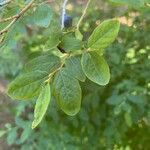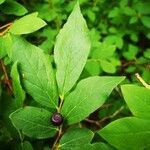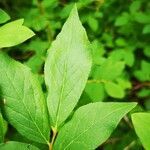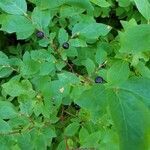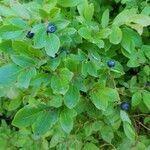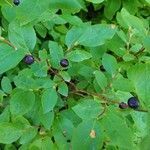An erect shrub. It grows 1 m or more high. The leaves are alternate and simple. They are thin and sword shaped. They are 5 cm long. There are fine teeth along the edge. The leaves turn red in the autumn. The flowers are pinkish white or yellowish-green. They are small and occur singly on short stalks. The flowers are bell shaped. The fruit are large blue berries. They are juicy and sweet. They are 5 mm across. They are edible.
